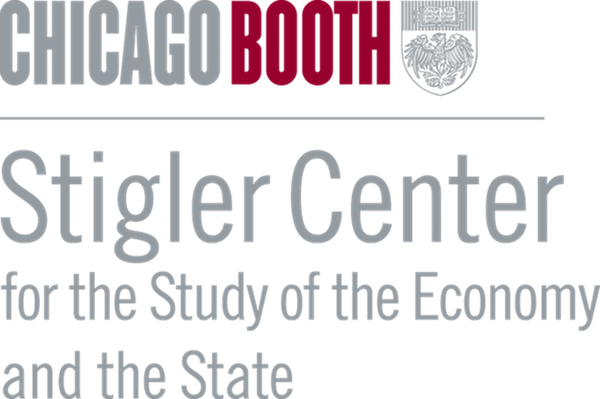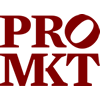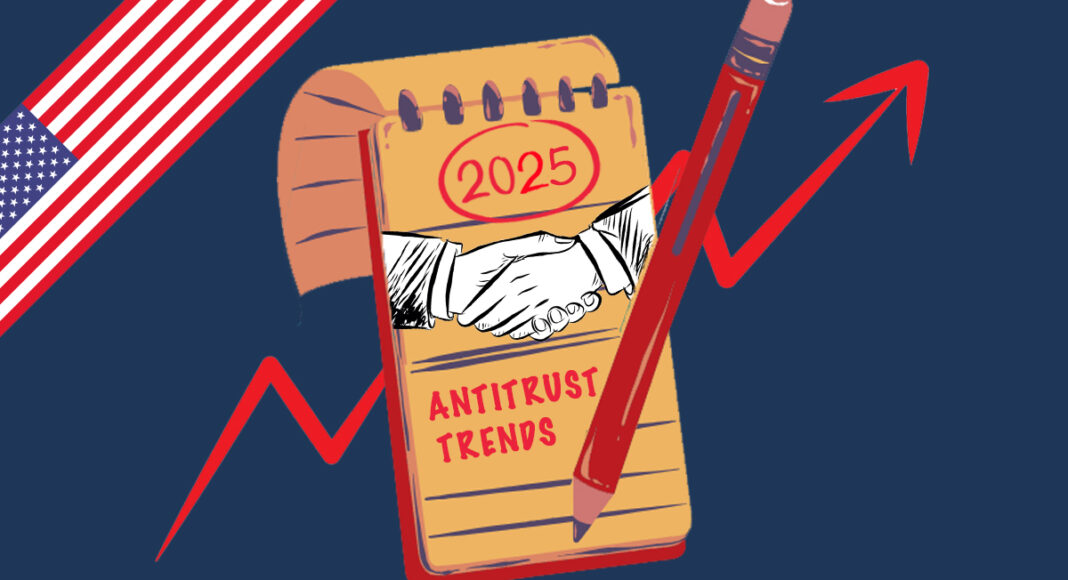Three antitrust experts predict the trends and cases that will define United States antitrust in 2025.
AI competition
Robin Feldman, University of California Law San Francisco
2025 will be the year to watch how federal and state competition authorities view the “Big 5” technology companies (Apple, Microsoft, Amazon, Alphabet, and Meta) dominating the United States artificial intelligence industry. Many people have raised concerns about the level of concentration in the industry, particularly given commonly noted choke points for essential inputs into modern AI systems. These chokepoints include skilled labor (which is in shortage) and massive pools of data and computing power (which the Big 5 have in abundance and new entrants cannot easily amass). The notion is that the Big 5 are large and powerful enough to prevent any new entrant from upsetting the applecart.
I am no great fan of industry concentration, but I am hesitant to assert that the government should step in at this point unless the cure will be better than the disease. Consider the shortage of skilled labor. Would we really want to hamper freedom of employment in Silicon Valley and prevent workers from earning high wages at the Big 5? As AnnaLee Saxenian showed in her groundbreaking research, Silicon Valley’s ability to vastly outpace the Cambridge-Boston area in entrepreneurship and venture capital can be traced to California’s laws, which reject most non-compete clauses, thereby giving workers the freedom to move from position to position. Is it worth tinkering with this system by restricting who can hire a particular type of worker?
Turning now to computing power, there is an explosion of innovation today in Large Language Models (LLMs), such as ChatGPT, and in similar models for images, videos, and music. These programs take an enormous amount of power to operate. . . at least they do today. Other architectures are being explored which would require far less power to operate. The same is true for data. Today’s LLMs require massive data sets, but if small language models become more powerful, the industry could unfold differently. In short, in an industry characterized by breathtakingly rapid innovation, not to mention vigorous competition between the major players, society may not wish to jump in quickly to break up a given chokepoint.
Most important, one should consider who benefits from any government action that risks handicapping U.S. companies’ ability to grow and innovate. Globally, we are already in a new type of Cold War, and the nation with the most advanced AI will dominate. On the military front, our conventional weaponry, as well as our ability to protect civil infrastructure, will have to keep pace with AI’s quantum speed. On the non-military front, we face attacks on the deliberative process itself and on our country’s foundational democratic principles. The challenge will be to sustain a deliberative process when the “deliberative” messages we receive can be curated, fed, or inflamed by our global adversaries. Again, leading the global pack in AI technology will be critical to protect U.S. interests.
At the end of the day, we are unlikely to win the AI war if we handicap the leading players or divide the capacities that give us the greatest edge. I see this as a cold reality in today’s AI landscape. It will be interesting to observe whether state and federal competition authorities view the AI landscape with a similar eye.
A tale of two cases
Harry First, New York University School of Law
When the new enforcement chiefs take over at the Department of Justice and Federal Trade Commission in 2025, they will inherit significant litigation against powerful firms. There is a long and obvious list of such cases—Google, Meta, Apple, and Amazon—but I want to focus on two cases that have received less attention. How the new enforcers approach these cases will tell us a lot about the direction of antitrust going forward.
The first is the DOJ’s case against Visa, filed in September 2024, alleging monopolization of network services for debit cards. This case carries forward the monopolization playbook that government enforcers have followed in the Biden Administration. According to the complaint, Visa provides a “suite” of services to all parties in the debit payments “ecosystem,” most significantly, the “rail” that merchants and consumers use to communicate with each other. According to the complaint, more than 60% of debit card transactions run on Visa’s network, earning Visa over $7 billion annually in fees.
The complaint emphasizes the tactic of the monopolist paying off its potential competitors—PayPal, Square, and, yes, Apple (see the Google Search case)—so long as they don’t develop competing products. The complaint also emphasizes that Visa’s tactics prevented upstart competitors from achieving sufficient scale, much as Google’s tactics did with its search competitors. What’s bad? Not only suppressing innovation from new fintech competitors, but also “supracompetitive prices.” Visa’s actions as the dominant “middleman” have imposed substantial “tolls” that are ultimately borne by consumers, merchants, “and the broader economy.”
The second case, filed four days before Visa, is the FTC’s administrative complaint against the three largest pharmacy benefit managers (PBMs) in the United States: Caremark, ESI, and Optum. Like Visa, these companies act as middlemen, but between health plan sponsors, pharmacies, and drug manufacturers. The three together administer approximately 80% of U.S. drug prescriptions.
At the heart of the FTC’s suit is the PBMs’ use of exclusionary “formularies” of approved drugs that will be covered by health plans and will qualify for rebates from drug makers. As drug companies competed for inclusion in the formularies, the PBMs “chased” higher and higher rebates and drug companies raised list prices to cover them. The FTC’s specific example is the pricing of insulin, for which it alleges substantial price increases “well over the rate of inflation.”
Unlike Visa, this case doesn’t follow the mold of prior FTC complaints. It’s not a monopoly case and it’s not a cartel case. Instead, the case follows the FTC’s 2022 Policy Statement on the scope of Section 5. Specifically, the complaint alleges that the PBMs’ rebate preferencing is an “unfair method of competition” because it is “coercive, exploitative, and restrictive” and “goes beyond competition on the merits.” This conduct raises the list prices of drugs, forces consumers to pay more, and “exploits and abuses vulnerable patient populations” who are denied access “to more affordable medications.”
The Visa and PBM cases are important for their focus on high consumer prices, imposed by firms with strategic market power in a complex distribution system, in economically significant industries. The decision in Visa will show us whether the DOJ intends to continue to pursue such cases under Section 2; the decision in the PBM case will show us how far the FTC is willing to push enforcement theories to control oligopolies, particularly when it comes to pharmaceutical drug pricing. Both cases will significantly define the tenures of the incoming antitrust enforcers.
A clean-up act
Justin Hurwitz, University of Pennsylvania Carey Law School
Over the next year, we will learn how the tenures of Federal Trade Commission Chair Lina Khan and Department of Justice Assistant Attorney General Jonathan Kanter abidingly altered the operations of their respective agencies. Love the Neo-Brandeisian approach to antitrust or hate it, the outgoing administration rejected the norms that restrained antitrust law—and potential abuses of it—for the past half-century. The greatest question for the future of antitrust enforcement in the United States as the Trump administration comes into power is whether the new FTC and DOJ leadership will reestablish previous restraints or embrace the freedom that the Biden enforcers championed to push antitrust law beyond its conventional limits.
In terms of specific predictions, I expect the agencies will mostly return to pre-Neo-Brandesian form. The agencies are resource-constrained, which pushes them to consider carefully which cases to investigate. In the past, this has forced the agencies to focus on violations of the law that clearly delineate between acceptable and unacceptable conduct. The goal has been to maintain and enforce legal rules, not shift them.
The exception to this may be with Big Tech. Here, the incoming administration has sympathies with the Neo-Brandeisian movement—though the motivating concerns are different. And, of course, there are several major carry-over Big Tech cases. Incoming FTC chair Andrew Ferguson pitched himself for the position by promising, among other things, to “Hold Big Tech Accountable and Stop Censorship” and to “Protect Freedom of Speech and Fight Wokeness.” It’s not clear how these would be considered antitrust concerns before the Biden administration. But this is what the Neo-Brandeisians have changed.
One thing to watch will be how Ferguson (and DOJ assistant attorney general nominee Gail Slater) work with antitrust’s progressive wing and the rise of the Little Tech narrative. It seems likely that the FTC’s Democratic commissioners will agree with many of the actions Ferguson might advance against Big Tech—but they may not agree on the terms on which he wants to pursue those actions. Will he be able to drive a coalition?
A second thing to watch is the world of Little Tech, mostly comprising the venture capital and start-up community, which grows in political importance. Exactly how it influences antitrust policy remains to be seen. A Little Tech antitrust agenda seems appealing to President Trump. But leaders in the Little Tech community recognize the dangers of expansive antitrust enforcement even as they support it to rein in Big Tech. It is hard to square a pro-Little Tech, restrained-antitrust vision with an unrestrained, anti-Big Tech vision.
Finally, keep an eye on the roll-back of various Biden-era rules and guidelines. Khan and Kanter liberally withdrew and replaced guidelines. Will the FTC adopt a new (or go back to the old) Unfair Methods of Competition policy statement? Will the merger guidelines be reset? Will the Hart-Scott-Rodino form rule changes be reversed? What about the non-compete rule, which is currently being litigated? The guidelines for collaboration among competitors? Or the memory-holing of the DOJ’s 1977 Robinson Patman report—which was a precursor to the agencies’ first RPA case in generations?
This overgrowth of rules and guidance sets the field of play for antitrust in the new administration. It’s hard, and in many ways unappealing, to spend one’s limited time at the head of an agency cleaning up after the previous administration. But reviewing the previous agencies’ proliferation of rules and guidelines and cutting back the harmful excess is likely necessary for an administration that wants to make antitrust great again.
Author Disclosures:
Robin Feldman has not received any funding to write this blurb. She serves as the director for the Center for Innovation at UC Law San Francisco. Please see the following link for the Center for Innovation’s funding sources. Feldman and her husband have various investments in public and private stock, many of which may have an interest in the AI industry.
Harry First reports no conflicts of interest.
Gus Hurwitz’s primary affiliation is as a senior fellow with the Penn Carey Law School. He is also director of Law & Economics Programs at the International Center for Law & Economics. He has academic freedom with both and receives no direct support from any for-profit entities.
Articles represent the opinions of their writers, not necessarily those of the University of Chicago, the Booth School of Business, or its faculty.






